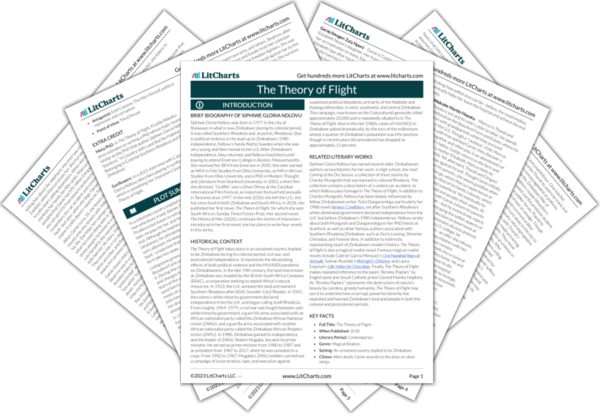In The Theory of Flight, beauty is something to be celebrated—but only when people appreciate it for itself, not when they use it as a tool to dominate others. This dynamic is clear in the reception of artist Vida’s sculptures, which he creates out of scrap metal he has salvaged. Initially Vida shows the sculptures to no one—he simply likes executing his own artistic ideas. When he shows them to Genie, however, she is overwhelmed by their “utter beauty,” and Vida realizes that the beautiful sculptures may have an aesthetic value independent of the pleasure he takes in making them. He ends up selling the sculptures to a daffy but well-meaning white heiress named Beatrice Beit-Beauford, who promptly donates them to a public sculpture park where their beauty can be enjoyed by all. In this first stage of the sculptures’ life, their beauty is something independently good, valuable, and inclusive, something that any spectator can take part in and derive meaning from.
Yet the second stage of the sculptures’ life shows how beauty can serve damaging social hierarchies. When art critics decide that Vida’s sculptures are an avant-garde commentary on the postcolonial condition, they condescendingly define the people who inspired the sculptures—real people that Vida knows from his life as a homeless person—as mere political symbols. After some social unrest in which the sculptures are vandalized, the government puts up fences around the sculptures, separating the beautiful objects from the public. Finally, The Man Himself declares that Vida, a mixed-race man, is “too white” to be the politically conscious postcolonial artist the public needs and orders the sculptures destroyed. Instead the sculptures are sold and scattered to galleries in richer countries, mostly in the West, where the people who inspired them and their original audiences are unlikely to be able to see them. The second phase of the sculptures’ life shows how beauty can become a site of bad-faith political struggle, social exclusion, and exclusive access to aesthetic value based on economic class. Rather than simply celebrating beauty, then, people have to ask why it is being celebrated and whether it is being used in problematic ways.
Beauty ThemeTracker

Beauty Quotes in The Theory of Flight
“We are your family now,” his new grandmother said, still not smiling. They all looked beautiful, the members of his family, but Marcus felt that their beauty was not to be trusted. It was a dangerous beauty. He was suddenly more terrified than he had ever been before. He let go of his bladder then, well aware that his urine would soil both his shorts and his mother’s shiny dress.
“You understand that in the grander scheme of things you are but a speck . . . a tiny speck , , , and that that is enough. There is freedom, beauty even, in that kind of knowledge . . . and it is the kind of knowledge that finally quiets you. It is the kind of knowledge that allows you to fly.”
It was only when he saw Genie looking at the things he had created with awe and wonder, only when he saw one hand traveling to her mouth to cover an “O” that had already escaped, only when he saw the other hand reaching out to touch him gently on the shoulder, only when she looked at the things he had created as things of utter beauty, only when she whispered, “I knew it. I knew you were special. I knew it,” her brilliant eyes never leaving the sculptures, it was only then that he realized that the things he created could actually have lives of their own—beyond him.











